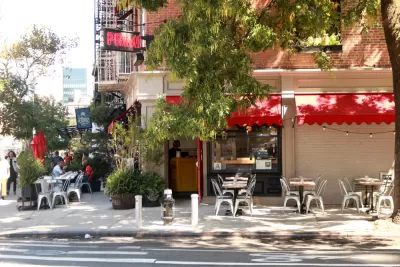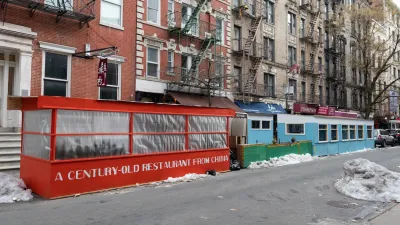Metropolitan areas with many options for places to eat offers many quality of life benefits to residents.

Joe Cortright explains the importance of restaurants to the quality of life and experience of U.S. cities.
One of the hallmarks of a great city is a smorgasbord of great places to eat. Cities offer a wide variety of choices of what, where, and how to eat, everything from grabbing a dollar taco to seven courses of artisanally curated locally raised products (not to mention pedigreed chickens). The “food scene” is an important component of the urban experience.
With those hallmarks in mind, Cortright shares an index of restaurants per capita as one indicator of where dining choice is greatest, assembled with data on the number of restaurants per capita in each of the nation’s largest metropolitan areas from the County Business Patterns data compiled by the US Census Bureau for 2012.
"The top six metropolitan areas on this indicator are San Francisco, New York, Providence, Boston, Seattle and Portland," writes Cortright. "Each of these cities has twenty or more restaurants per 10,000 population."
FULL STORY: Consuming the city: Ranking restaurants per capita

Trump Administration Could Effectively End Housing Voucher Program
Federal officials are eyeing major cuts to the Section 8 program that helps millions of low-income households pay rent.

Planetizen Federal Action Tracker
A weekly monitor of how Trump’s orders and actions are impacting planners and planning in America.

Ken Jennings Launches Transit Web Series
The Jeopardy champ wants you to ride public transit.

Washington Legislature Passes Rent Increase Cap
A bill that caps rent increases at 7 percent plus inflation is headed to the governor’s desk.

From Planning to Action: How LA County Is Rethinking Climate Resilience
Chief Sustainability Officer Rita Kampalath outlines the County’s shift from planning to implementation in its climate resilience efforts, emphasizing cross-departmental coordination, updated recovery strategies, and the need for flexible funding.

New Mexico Aging Department Commits to Helping Seniors Age ‘In Place’ and ‘Autonomously’ in New Draft Plan
As New Mexico’s population of seniors continues to grow, the state’s aging department is proposing expanded initiatives to help seniors maintain their autonomy while also supporting family caregivers.
Urban Design for Planners 1: Software Tools
This six-course series explores essential urban design concepts using open source software and equips planners with the tools they need to participate fully in the urban design process.
Planning for Universal Design
Learn the tools for implementing Universal Design in planning regulations.
Heyer Gruel & Associates PA
Ada County Highway District
Institute for Housing and Urban Development Studies (IHS)
City of Grandview
Harvard GSD Executive Education
Toledo-Lucas County Plan Commissions
Salt Lake City
NYU Wagner Graduate School of Public Service





























